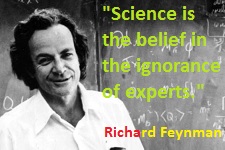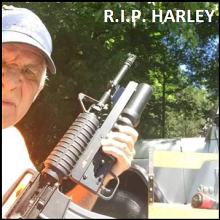A comment yesterday by RdM drawing attention to asteroid 2019 OK which passed 70,000 km (less than twice the distance of geostationary satellites) from the Earth last week jolted me sufficiently to get me to try to re-activate the orbital simulation model that I was using a few years ago after the Chelyabinsk fireball of February 2013. Last week’s asteroid was at least 3 times the size of the 20 metre wide Chelyabinsk rock, and by my rough guess would have had a 30 times more powerful explosive effect had it struck the Earth. Which is probably why they’ve called it a “city-killer.” And yet they didn’t see it coming until pretty much the last minute before it arrived.
This morning I was reading more about it on CBS news:
There are 20,000 near-Earth asteroids and they do occasionally make an appearance. In 2013, one slammed into Russia, injuring 1,600 people.
“It doesn’t really keep me up at night,” Glaze said.
So you shouldn’t use any sleep either because no huge asteroids are on track to collide with Earth for at least 100 years.
How do they know that there only about 20,000 near-Earth asteroids? And how do they know that no big ones are going to strike the Earth for at least 100 years?
I think that they really haven’t a clue how many big rocks are floating around out there.
And one good reason for thinking this is that if some of these rocks are in long period, highly eccentric (elliptical) orbits, and only show up near the Sun every two or three hundred years, they simply will never have been seen by anyone, because it’s really only over the past century or so that good optical telescopes have been manufactured in sufficient numbers for the skies to be kept under close observation.
One of the most famous of these long period bodies is Halley’s comet, which has an orbital period of about 70 years, and so only shows up in the inner Solar System every 70 years, and is also conveniently bright enough to be seen with the naked eye. And there are quite a lot of these comets, with orbital periods greatly in excess of 70 years.
For every one bright, shining Halley’s comet, how many dull, black, invisible ones are there, that arrive and depart unnoticed?
And what if the invisible ones arrive in packs? Last week’s 2019 OK may have had several companions (and a small one may have struck India). When asteroids disintegrate, usually after making a close approach to some planet or other, their fragments form long trains of bodies all following in each other’s wakes. in the same way as comet Shoemaker–Levy 9, before the fragments all piled into Jupiter in rapid succession:
 When I got interested in the Chelyabinsk rock, it was because I wondered whether it was a companion of asteroid 2012 DA14, which passed close to the Earth on the same day. And eventually I came to the conclusion, after using my orbital simulation model for about 2 years, that the Chelyabinsk rock had been for a long time a companion of DA14, and following about 25 million km behind it, and passing very close to the Earth in 2009.
When I got interested in the Chelyabinsk rock, it was because I wondered whether it was a companion of asteroid 2012 DA14, which passed close to the Earth on the same day. And eventually I came to the conclusion, after using my orbital simulation model for about 2 years, that the Chelyabinsk rock had been for a long time a companion of DA14, and following about 25 million km behind it, and passing very close to the Earth in 2009.
But I think that I can safely say that I’m about the only person in the world who thinks this.
For I have less and less faith in “experts” of every kind. I think they all pretend to know far more than they actually do. And that includes, of course, the climate scientists behind global warming alarmism, who have managed to whip up global hysteria about that. And it also includes all the doctors and public health activists in Tobacco Control who have managed to whip up even greater hysteria about tobacco smoke.
I’m a bit puzzled, in fact, why astronomers haven’t been busily whipping up hysteria about potential asteroid impacts. I’m puzzled as to why they always downplay the dangers, while climate scientists and doctors always play up their respective dangers.
Perhaps it’s because there’s next to nothing that can be done about these big rocks floating around in space, but you can stop smoking and you can stick solar panels on your roof, and so that’s what they try to scare us into doing.
Last week we had a bit of a close shave. But some day soon I think that someone is going to spot a large incoming rock that’s due to fall on Nairobi or Recife or someplace in just three days time. What would happen then? There’d be no stopping the thing, no possibility of nudging it off course. I suspect that the news would be suppressed, because if it became public knowledge there’d be panic on the streets of those cities, and roads choked with fleeing refugees. No, only a very few people would be told, and they’d all be powerful and influential people, who would slip out of town at short notice through the empty streets, taking their families with them. It would only be an hour or two before impact (and perhaps not even then), when escape had become impossible, that the news would finally be broken. And after the death of a million or more people in the impact fireball, there’d be a global panic far greater than the current hysteria over smoking and climate change, and rage against the elites who saved their own skins, and against the mainstream media that hid the truth.















Best draft and pass a raft of anti-asteroid legislation, so obviously effective in curtailing tobacco consumption, climate change, terrorism, and anything else Nirvana thinkers delude themselves they can control (let’s include earthquakes and tsunamis too). Go King Canute. 🌊
Facts, they don’t need no stinking facts.
Climate change activists chained themselves to the wrong building in the City of London after failing to realise the fossil fuel company they wanted to disrupt had moved address last year.
The group of 200 protesters instead brought chaos to the entrance of a building which houses the offices of a leading renewable energy company.
They thought they would be disrupting workers at the energy company Drax, which plans to build a new gas power station in north Yorkshire.
However, unbeknownst to them Drax moved its London headquarters to nearby Noble Street last year.
Instead bemused workers at Statkraft, a Norwegian hydropower company, which describes itself as “Europe’s largest generator of renewable energy”, were confronted with the protest.
A worker at the company told the Evening Standard: “They’re protesting against Drax, but they don’t live here anymore. I understand [the protester’s aims] but it helps if they check the facts.”
And boy did these vegans get more than they bargained for when they attempted to disrupt a rodeo in Argentina.
https://www.liveleak.com/view?t=uVCD9_1564508614
O/T POLL: “Should Smoking be banned in Shreveport bars? (Shreveport, Louisiana is next in the antismokers sights.” https://710keel.com/times-report-companies-tied-to-city-board-members-paid-millions/
Thanks for posting this, SL. FYI, the link you posted is incorrect. Here’s the correct link:
https://710keel.com/should-smoking-be-banned-in-shreveport-bars/
Joe, Thanks for the assist!
You’re welcome!
I found it a refreshing rarity that the article was written by a current smoker who believes in free choice (although I was a bit disappointed he felt the need to “admit” that it’s a “nasty habit” — why must there always be a disclaimer?). The poll currently sits at 70% against the ban, 30% for the ban, which is right in line with pretty much all the poll results we see that haven’t been astroturfed by Tobacco Control.
I see there are just 3 comments.
I’m nostalgic to see this, because here in NZ it was banned 10+yrs ago.
Nationwide, not up to Councils (Local Goverment).
But now local councils are pushing for outdoor smoking bans, infected by TC.
You guys & gals should fight it if you can.
Of course I voted No.
The poll is now currently sitting at 80% against the ban, 20% for the ban; it still hasn’t been astroturfed. But as we’ve seen before, public opinion probably won’t be taken into consideration at all when it comes time to vote on the ordinance.
I see further down Shreveport (pop. < 200,000, legally a city) must have issued an ordinance against "saggy pants", which someone is trying to get repealed!
https://710keel.com/councilwoman-fuller-aims-at-saggy-pants-law-repeal-video/
An aesthetic ban. And smoking came later? Wow! ;=})
A few reasons off the top of my head:
1. Puritanism: Antismokers hate having to see/smell tobacco being smoked. They encounter it on a daily basis and they don’t want to. When is the last time anyone felt personally “inconvenienced” or “offended” by an asteroid’s impact?
2. Power: By fearmongering, Antismokers can control the behavior of others for their own benefit, and in the process, get off on the power trip. It’s quite difficult to control an asteroid, especially when we are completely oblivious to close calls like 2019 OK until after the asteroid has already passed by Earth without incident.
3. Money: The pharmaceutical industry rakes in billions of dollars in profits from the sales of ineffective NRT products and horrifying drugs like Chantix. I guess a corporation could profit from claiming they’ve created some kind of “asteroid-proof” shielding, but with the infrequency with which asteroid impacts occur, most people would feel it’s wasteful. On the other hand, cancer, heart disease, etc. occur everyday without scientific explanation. This is the reason why Tobacco Control has been able to utilize propaganda to retain their grip on the media and society in general.
Well, well, well. Maybe we are about to see a rise in fearmongering and hysteria about potential asteroid impacts after all. I’m still not really sure who would stand to benefit from this, unless it’s simply meant to distract us and divert our attention from the ever-encroaching totalitarian state.
Asteroid danger: Scientists warn an asteroid hitting London ‘would be quite an issue’
Thanks, Frank !
Even more here, rich with links, and the always fun comments below, as with the other.
Obviously no point in passing legislation and putting up signs declaring
[ THIS IS AN ASTEROID FREE PLANET ]
Ha ha !!
I’m still thinking of subverting some local ‘Smoke Free’ signage …
Thanks! ;- )
A lower case t in tHIS ?
Well, it looks quite Celtic, perhaps.
I quite like it.
But it really wants to be (constructed as) a vector vs bitmap image, so that it scales.
I couldn’t see any poll voting option at the link. Now in Alice Springs after hiking Larapinta Track. None of my fellow non smoking hikers had any problem with me smoking as I hiked the Red Centre (guide even bludged a “dart”). 🚬